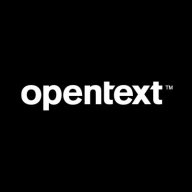

OpenText SiteScope and Apica are both robust IT monitoring solutions tailored for enterprise-level environments. Apica seems to have the upper hand in terms of overall features and ease of use, while OpenText SiteScope is praised for its customization options and integration capabilities.
What features are offered by OpenText SiteScope in comparison to Apica?OpenText SiteScope offers scalability, flexibility, and extensive monitoring templates. It also integrates well with other Micro Focus tools. Apica provides comprehensive end-to-end monitoring capabilities, rich real-time dashboards, and detailed synthetic monitoring. It stands out with its advanced analytics and user-friendly experience.
What areas of improvement can be found in OpenText SiteScope in comparison to Apica?OpenText SiteScope could improve by modernizing its interface and enhancing performance metrics granularity. Users also suggest refining its user interface. Apica could benefit from better documentation and streamlining some configuration processes. Users also recommend further usability enhancements.
How is the ease of deployment and customer service of OpenText SiteScope in comparison to Apica?OpenText SiteScope users report a more complex deployment process but robust customer support. Apica users find the deployment relatively straightforward. They also commend the proactive customer service. Apica generally has an advantage in deployment simplicity, while both have strong customer service acknowledgment.
What setup costs and ROI can be seen with OpenText SiteScope in comparison to Apica?OpenText SiteScope is often seen as having higher initial setup costs, delivering strong ROI through deep integration and broad functionality. Apica provides solid ROI, with users noting it is worth the investment due to its comprehensive features despite sometimes higher pricing. Apica seems favorable in balancing cost with the value delivered, while OpenText SiteScope is noted for long-term returns post-setup investment.
| Product | Market Share (%) |
|---|---|
| Apica | 0.5% |
| OpenText SiteScope | 0.6% |
| Other | 98.9% |


| Company Size | Count |
|---|---|
| Small Business | 4 |
| Midsize Enterprise | 2 |
| Large Enterprise | 17 |
| Company Size | Count |
|---|---|
| Small Business | 8 |
| Midsize Enterprise | 4 |
| Large Enterprise | 20 |
Apica leads in observability cost optimization, empowering IT teams to manage telemetry data economics efficiently. It supports various data types, reducing costs by 40% with flexible deployment options and eliminating tool sprawl through modular solutions.
Apica Ascent optimizes observability costs across metrics, logs, traces, and events and provides adaptability beyond proprietary formats. Its patented InstaStore™ technology ensures maximum storage efficiency and advanced root cause analysis. Organizations leverage Apica for comprehensive control over observability investments, reducing runaway costs. With solutions for mitigating high-cardinality data challenges, Apica supports any data lake preference and offers cloud or on-premises deployments. Its modular solutions eliminate unnecessary tool redundancies, enhancing economic efficiency in telemetry data management.
What features define Apica's capabilities?Apica addresses industry needs in monitoring and testing applications, enhancing user experience across sectors. It is instrumental in synthetic checks, load testing, API monitoring, and validating functionalities for stability in gaming, finance, eCommerce, and banking platforms. Apica's versatility supports both on-premises and cloud environments, ensuring accurate insights into service availability and network performance.
OpenText SiteScope is an agentless monitoring program that tracks the availability and performance of distributed IT infrastructures such as servers, network devices and services, applications and application components, virtualization software, operating systems, and other IT enterprise components.
OpenText SiteScope is an autonomous hybrid IT monitoring system that can monitor more than 100 different types of IT components in real time, thanks to a lightweight and highly customizable remote access architecture.
With OpenText SiteScope, IT teams can get the data they need to keep on top of problems and eliminate bottlenecks before they become major concerns.
OpenText SiteScope can reduce total cost of ownership (TCO) by utilizing agentless technology, which eliminates the need to install and monitor agents on each box. Manual activities can be automated, and teams can save time and effort by using pre-packaged solution templates.
OpenText SiteScope Features
OpenText SiteScope has many valuable key features. Some of the most useful ones include:
We monitor all Application Performance Monitoring (APM) and Observability reviews to prevent fraudulent reviews and keep review quality high. We do not post reviews by company employees or direct competitors. We validate each review for authenticity via cross-reference with LinkedIn, and personal follow-up with the reviewer when necessary.